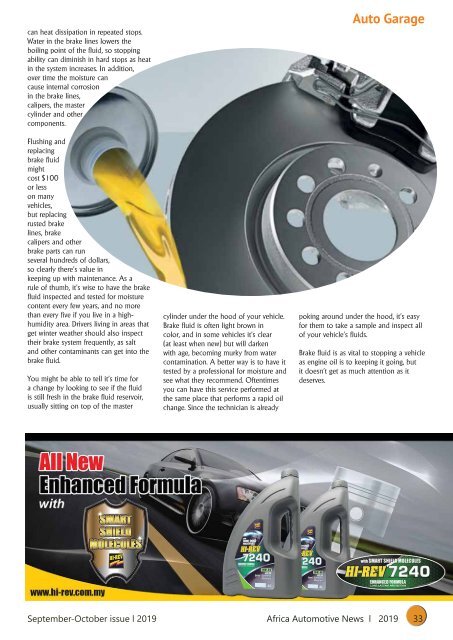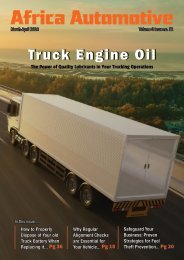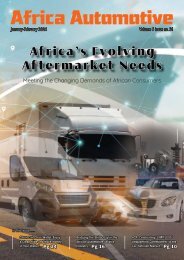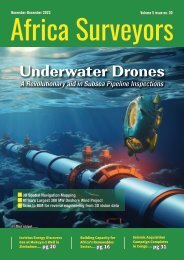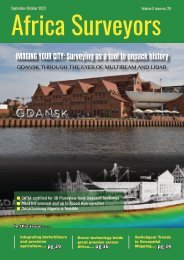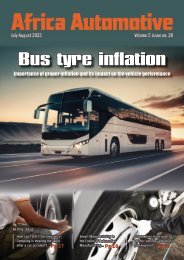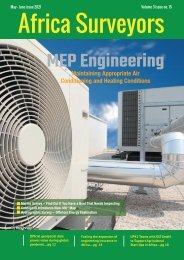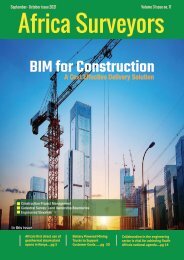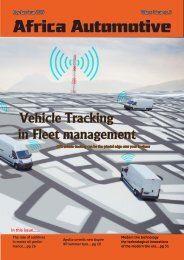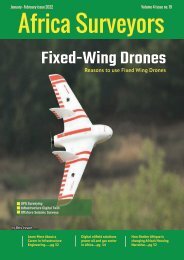Africa Automotive News September-October digital issue 2019
Africa Automotive prides itself to be the ONLY Africa’s leading and MOST authoritative magazine for the automotive industry in Africa with printed copies for the automotive industry decision makers in both government, NGO’s and private sector. The Bi-monthly magazine offers cost effective advertising services that get results and improves growth in the auto B2C and B2B sector, keeping an eye on latest technologies in Africa and across the world, the magazine predominately covers the developments in the Africa auto industry.
Africa Automotive prides itself to be the ONLY Africa’s leading and MOST authoritative magazine for the automotive industry in Africa with printed copies for the automotive industry decision makers in both government, NGO’s and private sector. The Bi-monthly magazine offers cost effective advertising services that get results and improves growth in the auto B2C and B2B sector, keeping an eye on latest technologies in Africa and across the world, the magazine predominately covers the developments in the Africa auto industry.
Create successful ePaper yourself
Turn your PDF publications into a flip-book with our unique Google optimized e-Paper software.
can heat dissipation in repeated stops.<br />
Water in the brake lines lowers the<br />
boiling point of the fluid, so stopping<br />
ability can diminish in hard stops as heat<br />
in the system increases. In addition,<br />
over time the moisture can<br />
cause internal corrosion<br />
in the brake lines,<br />
calipers, the master<br />
cylinder and other<br />
components.<br />
Flushing and<br />
replacing<br />
brake fluid<br />
might<br />
cost $100<br />
or less<br />
on many<br />
vehicles,<br />
but replacing<br />
rusted brake<br />
lines, brake<br />
calipers and other<br />
brake parts can run<br />
several hundreds of dollars,<br />
so clearly there’s value in<br />
keeping up with maintenance. As a<br />
rule of thumb, it’s wise to have the brake<br />
fluid inspected and tested for moisture<br />
content every few years, and no more<br />
than every five if you live in a highhumidity<br />
area. Drivers living in areas that<br />
get winter weather should also inspect<br />
their brake system frequently, as salt<br />
and other contaminants can get into the<br />
brake fluid.<br />
You might be able to tell it’s time for<br />
a change by looking to see if the fluid<br />
is still fresh in the brake fluid reservoir,<br />
usually sitting on top of the master<br />
cylinder under the hood of your vehicle.<br />
Brake fluid is often light brown in<br />
color, and in some vehicles it’s clear<br />
(at least when new) but will darken<br />
with age, becoming murky from water<br />
contamination. A better way is to have it<br />
tested by a professional for moisture and<br />
see what they recommend. Oftentimes<br />
you can have this service performed at<br />
the same place that performs a rapid oil<br />
change. Since the technician is already<br />
Auto Garage<br />
poking around under the hood, it’s easy<br />
for them to take a sample and inspect all<br />
of your vehicle’s fluids.<br />
Brake fluid is as vital to stopping a vehicle<br />
as engine oil is to keeping it going, but<br />
it doesn’t get as much attention as it<br />
deserves.<br />
<strong>September</strong>-<strong>October</strong> <strong>issue</strong> l <strong>2019</strong><br />
<strong>Africa</strong> <strong>Automotive</strong> <strong>News</strong> l <strong>2019</strong> 33


